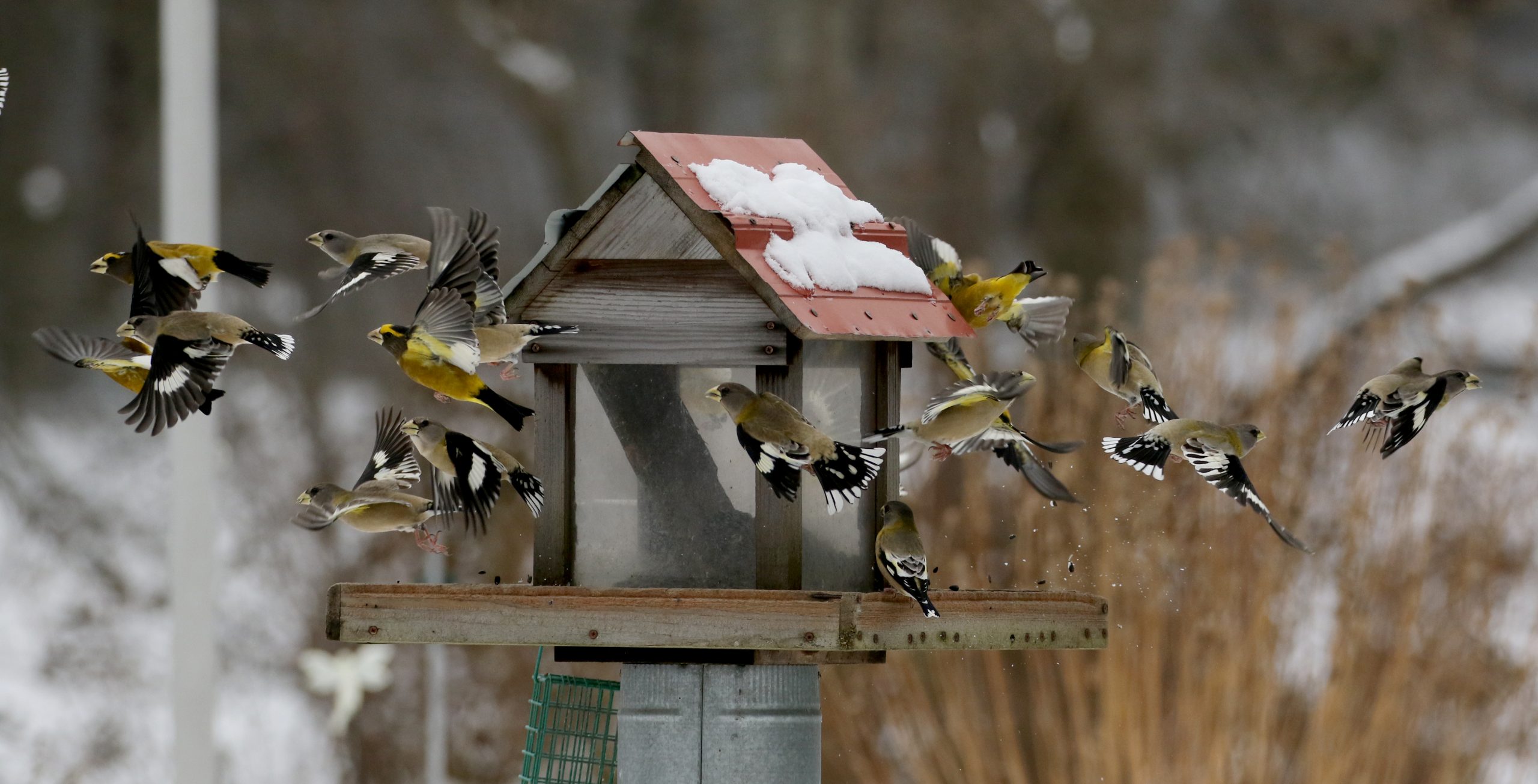Irruption Alert: Evening Grosbeaks are moving in their largest numbers in 20+ years.
By Tyler Hoar and Matthew Young:
The Evening Grosbeak irruption for winter 2020-21 is well underway! Similar to the Fall months of 2018, the last time the Evening Grosbeak moved southward in numbers, this year’s movement has mainly come out of the Province of Quebec as well (see below eBird maps comparing Sept-Oct 2020 to Sept-Oct 2018). The irruption has triggered eBird alerts across Ontario and the northeastern states down to West Virginia and Florida already. In the last week more birds have also been noted in the Great Lakes region, where sightings have reached Indiana. This fall’s irruption appears to involve a larger number of individuals than 2018’s, and we’re only getting started with still almost a week left in October.
Evening Grosbeak eBird map Sept-Oct 26th 2020
Evening Grosbeak eBird map Sept-Oct 2018
In September, observers at Tadoussac Bird Observatory in Eastern Quebec counted their highest numbers for their early fall count in 25 years, with the vast majority of birds moving southwest. In Mid October, almost 1000 Evening Grosbeaks were observed moving southwest at Rimouski Quebec. On October 20th, Toronto and southern Ontario had a widespread flight of birds moving west/southwest. October 24-25th, a much larger and widespread flight moved southwest through Southern Ontario with single location counts in the 100s. While there wasn’t a big single count noted in the northeastern states, dozens of eBirds alerts popped up on these same days across much of the region. With sightings already in Northern Florida (map below), the irruption may very soon reach the mountains of the Carolinas and Georgia. “Be sure to be on the lookout for birds on the Piedmont in the Carolinas as well”, says North Carolina Park Ranger and birder Dwayne Martin.
Look for Evening Grosbeaks to be foraging on Maple, Box Elder, and Ash samaras, on Cherry and Crabapple seeds, and on Sumac fruit. At feeders this species prefers platform or hopper feeders well stocked with Black Oil Sunflower seeds. As winter finches go, the Evening Grosbeak is perhaps the most gorgeous of all, and we hope that many of you are lucky enough to enjoy them at your feeder during this winter!
Photo Credits Jay McGowan
FiRN is a nonprofit, and has been granted 501c3 status. FiRN is committed to researching and protecting these birds and other threatened finch species like the Evening Grosbeak and Rosy-finches, and if you have been enjoying all the blogs and identifying of Red Crossbill call types, redpoll subspecies and green morph Pine Siskins FiRN has helped with, please think about supporting our efforts and making a small donation at the donate link below.
Here’s another great read about the Evening Grosbeak: https://finchnetwork.org/the-irruptive-evening-grosbeak-of-the-west-type-1

